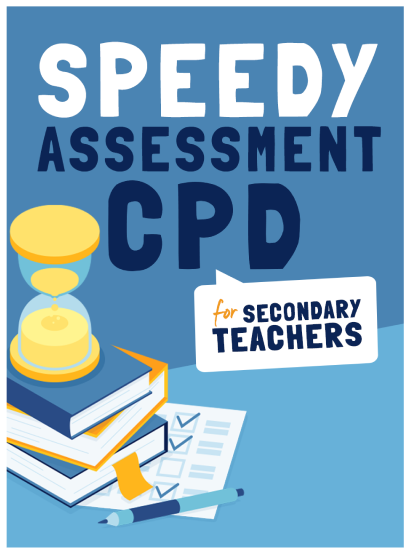5 Ways to Teach Students to have a GCSE Mindset

Focus on these five, key, non-cognitive traits, say Steve Oakes and Martin Griffin – and you can transform any student into an effective learner…

Take a second to consider these questions. When did you finally figure out how to motivate yourself? Set goals you could stick to? When did you learn how to solve problems, think creatively or organise a busy working week?
Chances are it was in your first job after graduation. (If you’re anything like us, it could be that you’re still trying to figure it out.)
On the hoof in early adulthood we’ve all developed a series of strategies to handle life at work, embedding them so that they’re now habit and routine; a set of traits that help us face down challenges, stay positive, plan and organise projects, complete thousands of concurrent tasks and still go home each Friday to enjoy our weekend.
Or most of it, at least.
Make it explicit
We’re lucky people indeed if anyone has ever explicitly taught us how to do these things. This isn’t an article about Carol Dweck. It’s about how we learn – and by extension how we might teach – a set of non-cognitive skills and strategies to make our learners more effective and successful.
There’ve been times in our combined 40 years of teaching when we’ve been guilty of crossing our fingers and hoping for the mysterious arrival of a set of transformative traits and attitudes at Key Stage 4.
Praying that the kids will change without (a) specifying what non-cognitive qualities we want to see, or (b) supporting their development. For us, seven years of action research have shown us that if we want really successful learners, we need to teach young people to develop five key non-cognitive traits. Here they are, with some suggested starting points:
1. Vision
Determined and successful pupils know why they’re going through the pain of demanding study. They’ve strengthened their ability to defer gratification because they have a medium or long-term goal in mind.
Low vision pupils seem listless or bored; they procrastinate excessively and are exasperated with courses, teachers or their harder-working peers. They just doesn’t know why they’re putting themselves through it.
One starting point: Develop your pupils’ vision by creating vision boards with photos of the college or university they want to go to (the accommodation, the gym, the campus.)
Encourage images of heroes, inspiring quotes, family members who will be proud of their success. Anonymous vision boards can line the walls of classrooms; personal ones can go on the inside cover of folders.
2. Effort
High-effort pupils equate their success with hard work. Putting effort into study isn’t a symptom of weakness for these youngsters. They have surrounded themselves with peers who feel the same, and are exacting in their expectations of themselves.
Low-effort pupils are often comfortable short-termists oblivious to the levels of hard work put in by others. One of their favourite narratives is about how they are “working much harder now”; meaning they’ve doubled their hours of revision from one to two per week.
One starting point: Low-effort pupils often make numerous aborted attempts to improve. Use ‘If-Then’ planning to pre-make decisions about what to do when fate derails them.
“If the internet is down when I try to revise then I will…” “If my friends come along to disturb me then I’ll…” “If I can’t print off the exam paper, instead I will…”
If you scope out the most likely issues and decide what to do before they happen, pupils are more likely to keep their study promises.
3. Systems
Successful pupils have developed systems that allow them to organise time and resources. They have neat files and folders; handouts arranged and sequenced so they can make connections between topics and learn faster. They hit deadlines and prioritise according to need and impact.
Low-systems pupils’ bags are a mess of crumpled handouts, their planners or diaries aren’t used. They sleep badly, woken at night by sudden panicky half-memories of a test or a homework they’ve forgotten about. They’re stressed.
One starting point: Matrices beat lists for strategic management of tasks. Create a matrix with a horizontal line that runs from ‘behind schedule’ to ‘ahead of schedule’. Now add a vertical line that runs from ‘low-quality work’ to ‘high-quality work’.
Pupils can now put every subject (or topic, or module) they study somewhere on the matrix. Anything ‘behind schedule’ and ‘low quality’ is an immediate priority.
4. Practice
Successful pupils spend uncomfortable study time operating at the edge of their ability, isolating the things they can’t do and fixing them. They complete extra work for handing in, done under timed conditions. They isolate skills and practice them, paying close attention to feedback.
Low-practice pupils often work very hard, but don’t make swift progress. They revise comfortably, reviewing content without developing skills. They love flashcards, mind-maps, posters, YouTube videos. You won’t have seen an extra piece of work handed in for marking or the voluntary completion of a timed test.
One starting point: Explain that powerful practice replicates the conditions of the exam. Pupils need to master the content then move on to tasks which require all their concentration and push them into flow.
There’s a connection between environment and performance – ask pupils to audit their work spaces and design high-flow spaces which promote complete focus and concentration. Ban the re-doing of mindmaps in bed with a movie on in the background (this happens!).
5. Attitude
Successful pupils know that learning is not smoothly linear, but composed of a series of sharp inclines, plateaus and setbacks – that mastery happens slowly through deliberate effort and application.
Low-attitude pupils aren’t just fixed mindset learners who’ve internalised the ‘you’ve either got it or you haven’t’ narrative about learning.
They often suffer bouts of pessimism and self-loathing. They make unfavourable comparisons between themselves and others. They’re defensive; protecting their ego by withdrawing from challenges.
One starting point: Low-attitude pupils don’t often ask for help because it confirms their conception of themselves as cognitively weak.
Try a network audit: draw up a list of everyone waiting to support the pupil.
Include teachers tutors, mentors, librarians, peers, older siblings, parents. Then ask them to cross off the names of people they’ve recently asked for help. There won’t be any! Attach names to tasks emphasising how help speeds up the completion of tasks.
Once we look at non-cognitive skills this way we can cut through the complexity and noise, and diagnose underperformance much more strategically, moving away from catch-all generalisations such as ‘this student is lazy’, ‘this pupil has the wrong attitude’ or ‘this youngster is poorly motivated’.
And the intervention we design as a result will be much more likely to have an impact.
Steve Oakes and Martin Griffin are co-authors of The GCSE Mindset (Crown House Publishing).











